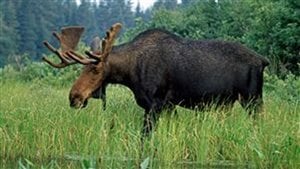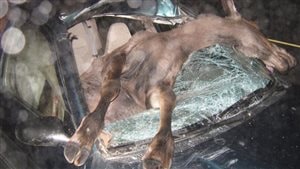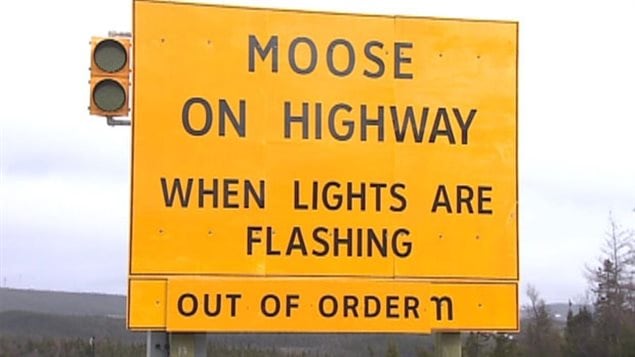Newfoundland has the highest concentration of moose anywhere.

Brought to the island at the turn of the last century, they have no real predators in Newfoundland and so the population has thrived.
The big animals are amazing to see in the woods, but are definitely not what you want to see suddenly looming out of the darkness on the highway in front of you..
The large dark-furred animals, about the size of a big horse are involved in many car accidents every year in Canada, and while almost always fatal for the moose, it also results in many serious injuries and is often also fatal for the occupants of the car.
Because the collisions are so common in Newfoundland where highways cut through quite vast forested areas between cities and towns, an idea was put forward to create a system of sensors and lights to warn motorists that a moose was on the road ahead.
Two sets of sensors were set up as a pilot project on the Trans-Canada Highway outside the capital St John’s , and Grand Falls Windsor, another major centre. Sensors would detect a moose on or near the road and signal flashing lights, warning motorists of the danger so they would slow down.

The system was to cost about $600-thousand, but ended up costing over $1.5 million, and since it was announced three years ago, only functioned about 40 percent of the time.
The government says the system is off and will now stay off but at this point there is no decision whether to leave the equipment in place, or dismantle it.
Citizens groups say fencing along the highway is the only way to keep moose off the road.
They argue it will cost a lot, but much less than hospital and re-habilitation costs for victims of moose-vehicle collisions.
The province had installed fences along a small stretch of highway in western Newfoundland as part of its pilot project.
Irving Filatre of the west coast community of Barachois Brook said he thinks the fence works.
“Driving back and forth to Corner Brook, I’ve seen quite a few on the inside of the fence, running along the fence,” said Filatre. “Moose, winter time, you could sure see the tracks there. You know they’re trying to get across.”







For reasons beyond our control, and for an undetermined period of time, our comment section is now closed. However, our social networks remain open to your contributions.